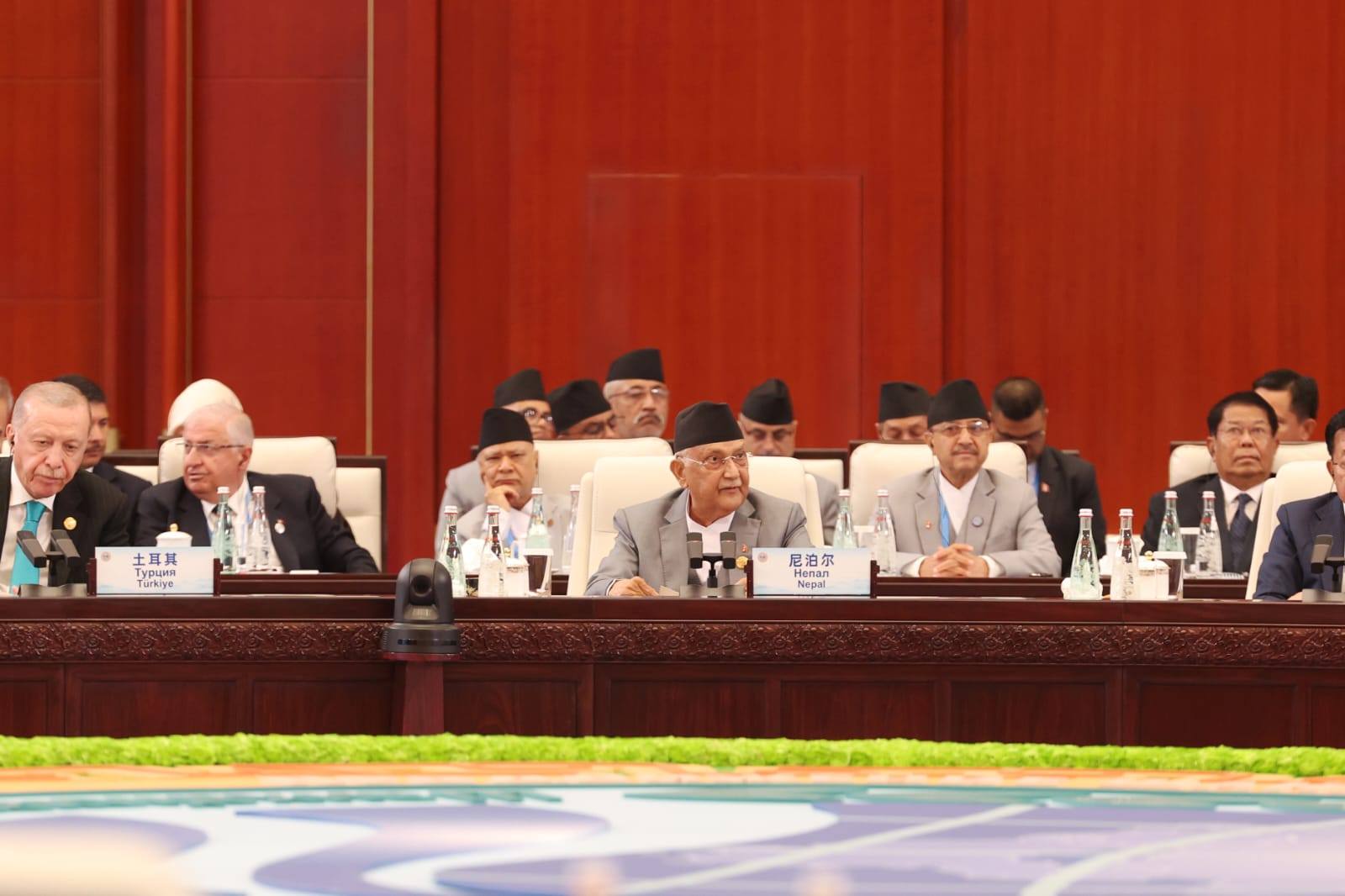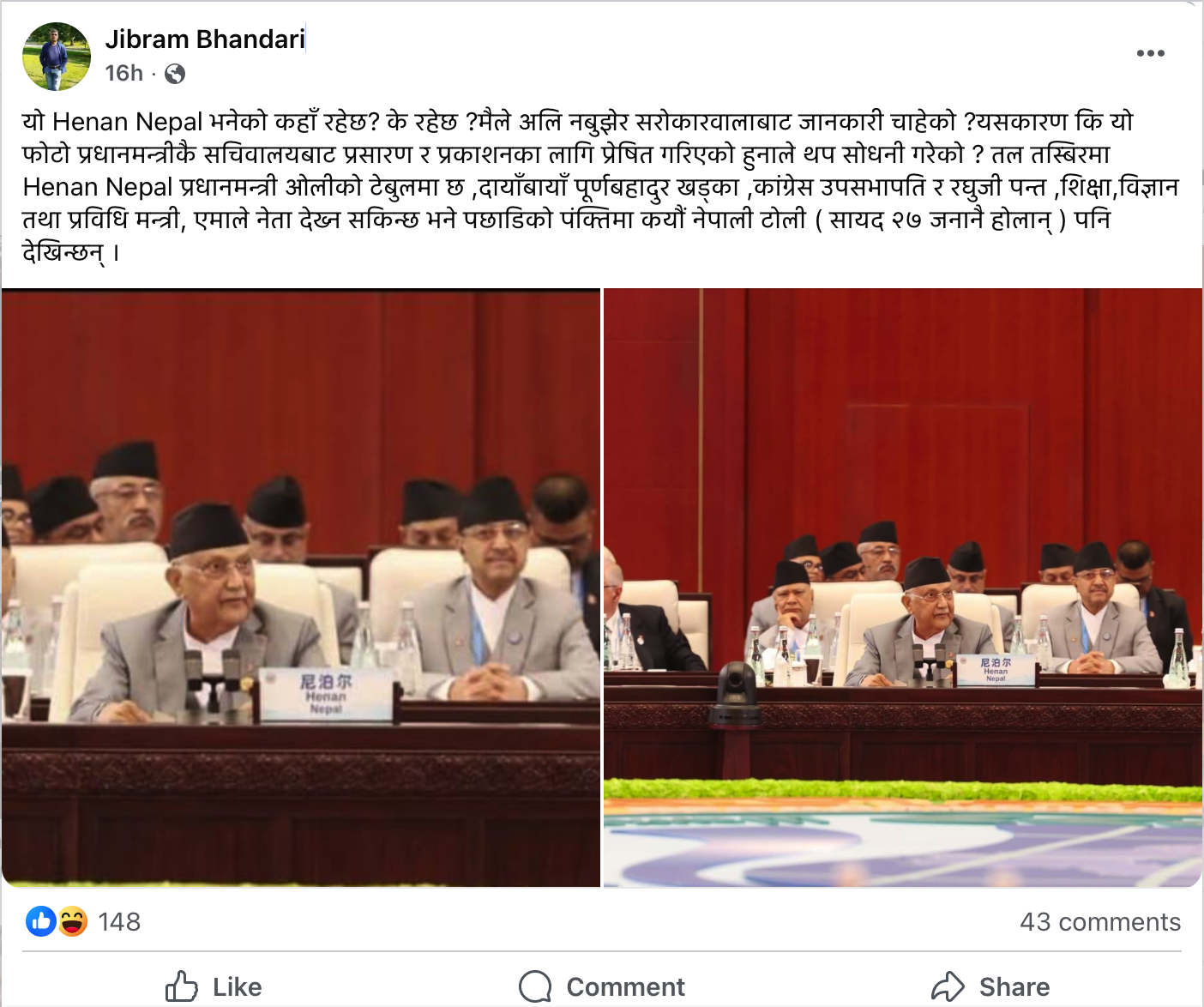Mao’s Five-Finger Policy Revived? Nepal’s Sovereignty Questioned as Oli Visits China

A photo from the high-level summit in Tianjin, China, showing a nameplate reading “Henan Nepal” in front of the Nepali delegation has triggered widespread debate across Nepal. With Prime Minister KP Sharma Oli leading the delegation, the appearance of the nameplate has raised questions about China’s sharp power, Nepal’s sovereignty, and possible diplomatic signals.
Senior journalist Jibram Bhandari was the first to raise the issue on social media, writing:
“Where exactly does this Henan Nepal come from? What does it mean? I sought clarification from the concerned authorities because this photo was sent out by the Prime Minister’s Secretariat for publication. In the photo, the nameplate reading ‘Henan Nepal’ is clearly visible on PM Oli’s table, with Purna Bahadur Khadka (NC Vice President) and Raghuraj Pant (Minister of Education, Science, and Technology, UML) seated beside him, while nearly 27 Nepali delegates can be seen in the background.”

Following his post, social media exploded with mixed reactions. While some users linked the word Henan to a Chinese province, others claimed it was written in Russian script.
Sharad Sharma commented, “Henan is a province in central China.”
Santosh Prakash Pant added, “Henan is indeed a Chinese province. Its capital is Zhengzhou; there’s nothing surprising here.”
Bista Narendra further explained, “河南省, also called ‘Henan,’ is a historic province in central China.”
However, others argued that the nameplate was written in Russian. KM Singh wrote, “This is not Henan; in Russian, Nepal is written as ‘Непал’.”
Krishna Kandel said, “The nameplate shows three scripts — first Chinese, second Russian, and third English.”
Similarly, Ramsharan Basnet commented, “In Russian, Nepal is referred to as Henan.”
The incident has resurfaced Nepal’s geopolitical sensitivities. Several analysts have linked it to China’s diplomatic signaling and Mao Zedong’s Five-Finger Policy, which sees Tibet as the palm and Nepal, Bhutan, Sikkim, Ladakh, and Arunachal Pradesh as the “five fingers” within China’s perceived sphere of influence.
Debate continues to intensify on social media. Some have described the incident as a “symbolic missile strike on Nepal’s sovereignty”, while others interpret it as part of China’s soft-inclusion strategy. On the other hand, several users view it as a simple administrative error that should not be unnecessarily politicized.
Indian strategic analysts have also taken note, viewing the issue as a potential strategic signal from Beijing. They warn that if Mao’s Five-Finger Policy is being reactivated, it could increase geopolitical tensions not only for Nepal but also along India’s northern borders.
So far, neither the Government of Nepal nor the Ministry of Foreign Affairs has issued an official statement. When contacted by Nepal Aaja, a senior ministry official briefly responded:
“We are gathering details on the matter.”
At a time when Nepal-China relations are at an extremely sensitive stage, with deepening economic cooperation, infrastructure investments, and political ties, this incident has raised serious questions about Nepal’s identity, independence, and geopolitical positioning.
The central question remains —
Was this just an administrative oversight, or a symbolic display of China’s sharp power?

![From Kathmandu to the World: How Excel Students Are Winning Big [Admission Open]](https://nepalaaja.com/index.php/img/70194/medium/excel-college-info-eng-nep-2342.jpg)
